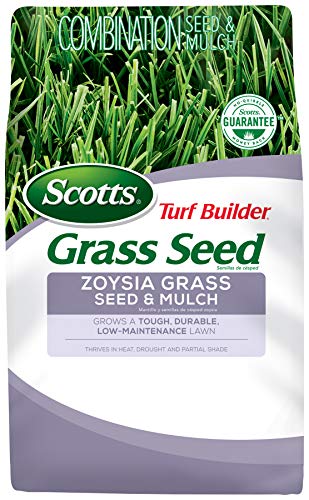Not every grass species thrives well in sandy soil. If you live in areas with sandy soils such as those close to the beaches of Miami, you’ll need to plant grass seed that grows and thrives in the sand. But what is the best grass for sandy soil?
The best grass varieties that grow on sandy soils include tall fescue, zoysia, Bermuda grass, bentgrass, and bahiagrass. Most of these turfgrasses form deep roots that help them absorb water and nutrients effectively in quick-draining sandy soils. You can use their grass seed to establish a lawn near beaches.
Can Grass Grow In Sand?
Any type of grass can grow in sand provided there is water and some amount of fertilizer in the loose soil. After germination, some varieties of grass can struggle to grow and spread at a rate that you anticipated.
The problem with sandy soil is that it drains so fast and may not hold nutrients and moisture for long. That is why I highly recommend that you improve the soil quality before establishing your lawn in areas with sandy soil.
What Is the Best Grass Seeds for Sandy Soil?
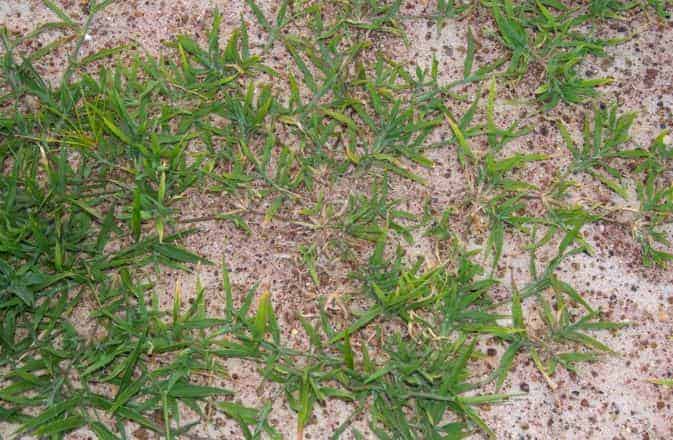
There are some varieties of grass seeds that can grow in sandy soil. Let’s have a look at these and what you’ll need to do to establish a great lawn.
Here are 5 grass types you can grow in sandy soil:
1. Tall Fescue
| Grass type | Perennial, cool-season grass |
| Sunlight requirement | At least 4 hours of direct sunlight. |
| Soil type | Well draining soils |
| Soil pH | 5.5 to 7 |
| Peak season | Fall and spring |

Creeping Red Fescue grows best in the sand, which is well-drained soil with a pH of 5.5 to 8.0. It is highly adaptive to different soil types including sands, gravels, and pebble beaches, and can grow well along sea coasts and even meadows.
Red fescue is a slow-growing grass type, meaning it is a low-maintenance turfgrass. However, its peak seasons of rapid growth are spring and late summer.
2. Bentgrass
| Grass type | Perennial, cool-season grass |
| Sunlight requirement | Full sunlight exposure |
| Soil type | Well-drained soil |
| Soil pH | Acidic 5 to 6.5 |
Bentgrass is common for Southern lawns and prefers well-aerated soils, This means that is one of the best grasses that grow in sand and places with beaches. You can easily establish a bentgrass turf with a highly permeable mixture of sand and organic matter.
You can grow a bentgrass lawn in the northeastern regions of the United States where there are cool and humid environments.
- Perfect for home lawns and golf courses, athletic fields for the creeping, dense growth, beautiful coloration and short mowing tolerance
- This grass forms a dense mat by creeping stolons and has a shallow root system with long slender leaves.
- Dark green, hardy and upright growth pattern
Affiliate links and images pulled from the Amazon Product Advertising API on: 2024-10-21
3. Zoysia
| Grass type | Perennial, warm-season grass |
| Sunlight requirement | Full sunlight exposure |
| Soil type | Soil with good drainage |
| Soil pH | Slightly acidic 6.0 to 6.5 |
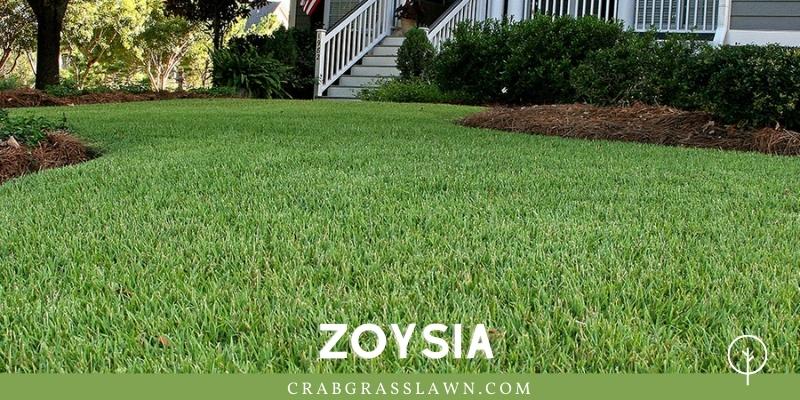
Zoysia grows well in sandy soils and is categorized for the USDA plant hardiness zones 6 to 9. Zoysia grass seed is great for sand soil and yards near the beach because it develops deep roots that help it absorb nutrients and water in fast-draining soil types.
Apart from the deep roots, it is well adapted to drought and can grow well with very little water requirements. For this reason, you can grow it in areas that drain water really fast.
In terms of growth rate, zoysia grass develops fairly slower than other turfgrasses such as St. Augustine but will grow quickly when well fed with a 5-10-5 NPK or other fertilizer with high nitrogen and phosphorus for root development.
Pro tip: If you decide to establish a lawn in sandy soil, do not use the Meyer variety of zoysia grass. Also called “Z-52”, it is highly susceptible to nematodes. Nematode infestation is very common in sandy soils.
- Zoysia grass seed & mulch is designed for full sun and light shade
- Combines mulch and grass seed to grow a tough, durable, low-maintenance lawn
- Extremely versatile seed mix that's 99.9% weed free
Affiliate links and images pulled from the Amazon Product Advertising API on: 2024-10-21
4. Bermuda grass
| Grass-type | Perennial, warm-season grass |
| Sunlight requirement | At least 4 hours of direct sunlight. |
| Soil type | Clay, loam, sand soil (well-adapted) |
| Soil pH | 5.8 to 7.0 |
| Peak season | Spring through Summer |
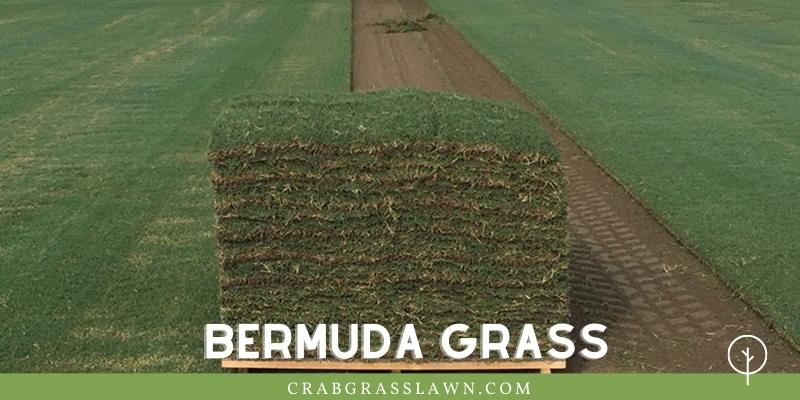
Bermuda grass can grow in sand and spread fairly fast because it thrives really well in areas that have great drainage. If you’re establishing a lawn near the beach, Bermuda grass seed is one of the options you should consider.
But, can Bermuda grass grow in sand and shade?
While it can thrive in loose sandy soil, Bermuda grass may not do well in shaded areas. It requires full sunlight exposure for the most part of the day (at least 4 hours).
You may want to trim trees around your yard to reduce canopy and shade before establishing a bermudagrass turf in a sandy area.
The two varieties of Bermuda grass that can tolerate drought well as well as tough cold conditions are Riviera Bermuda and Yukon.
These two cultivars of Bermuda grass show slow-to-dormancy characteristics and will do well in the transition zones. Learn about the differences between Riviera and Yukon Bermudagrass to make the right decision.
Note that Bermuda grass can also grow well in other soil types including clay soil. This is usually attributed to its deep rhizomes and root system that enable the grass to obtain nutrients and water with ease.
It also spreads really fast to form a carpet-like coverage, which can help it prevent loss of moisture in highly aerated sand soils.
- Establishment Time: Under ideal conditions, full coverage may be attained between 4 to 6 weeks. If planting the putting green seed occurs early or late in the season, more time may be needed for establishment.
- Days to Germinate: After planting bermuda seed, with ideal conditions, germination may begin within 7 days. Allow 10 to 14 days for completion for bermudagrass seed.
- Where to Plant: In full sun on well drained soil. Proper drainage is essential for successful establishment and the development of a mature, healthy putting green.
Affiliate links and images pulled from the Amazon Product Advertising API on: 2024-10-21
5. Bahia Grass
| Grass type | Perennial, warm-season grass |
| Sunlight requirement | Prefers full sun |
| Soil type | Light, well-drained soil |
| Soil pH | Slightly acidic 5.5 to 6.5 |
Bahia is also a great grass that grows in the sand even though it is usually not my first choice for lawn establishment. It is well-adapted to sandy areas such as beaches because of its deep root system. Here’s a detailed factsheet on bahiagrass.
This grass type has outstanding drought and heat tolerance. You can establish a lawn along the coastal regions with Bahia grass seed, which will require less water to grow as do many other grass types.
Bahiagrass grows much better than other grasses in infertile, sandy soils, meaning that it is a low-maintenance turfgrass. This is due to its deep root system. That is why it is common in the Southeast lawns with sandy soils.
- Pensacola Bahiagrass grass seed designed for full sun
- Coated to absorb 2x more water than uncoated seed
- Establishes deep roots and tolerates stress for lower maintenance
Affiliate links and images pulled from the Amazon Product Advertising API on: 2024-10-21
6. Seville St. Augustine
| Grass type | Perennial, warm-season grass |
| Sunlight requirement | 6-7 hours of sun a day |
| Soil type | Sand, Muck, Clay |
| Soil pH | Most soil types 3.5 to 6.5 |
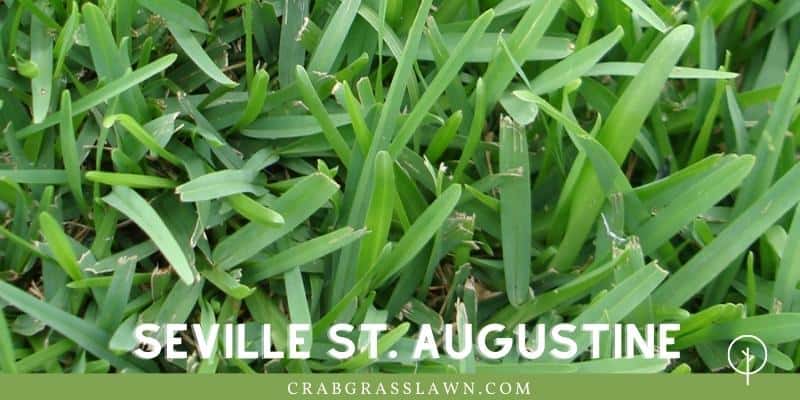
St. Augustine grass does really well in sandy soil conditions. The Seville variation of St. Augustine grass does really well in poor conditions and is the recommended blend to go with if you are not sure of the pH condition of your soil, as it thrives in low to high pH levels.
How to Grow Grass in Sandy Soil?
When establishing a lawn in sandy soils, preparation is key to the successful germination of the grass seed as well as growth and coverage. Sandy soil drains really fast yet grass seed needs plenty of moisture to germinate.
Here’s how to grow grass in sand successfully:
- Clear the yard to remove any debris, sticks, and large pebbles.
- Till the upper 4 inches of soil and mix with compost for increased nutrients and water retention.
- Put down a good starter fertilizer for lawns (preferably a fertilizer with high phosphorus content).
- Mix the fertilizer with the top sandy soil and compost properly.
- Spread grass seed that grows on sandy soil following the label directions.
- Cover the grass seed with 1/8 inch of local soil by running the back of your garden rake over the yard.
- Water the grass seed adequately on a daily basis to ensure proper germination.
Be careful not to over-water your lawn. If you do, you’ll easily wash away the grass seed and end up with a poor germination rate.
Keep in mind that since sandy soil is well-draining, it does not retain water and nutrients much. You may need to do a little more in terms of feeding your lawn established in sandy areas in Florida, Michigan, New York, Wisconsin, Texas, North Carolina, South Carolina, etc.
Is Sandy Soil Good for Seeds?
Sandy soil isn’t good for all grass seeds but is good for plants that prefer well-drained and drought root zone conditions. These seeds include radishes, beets, carrots, and other plants that have deep plant roots.
What Is the Disadvantage of Sandy Soil?
Sandy soils have large particles and hence feel light and gritty to the touch. Owing to this, sandy soils dry out quickly, are acidic, and are low in essential nutrients. Sandy soils also require more water, fertilizer, and usually more soil amendments.
How Do You Enrich Sandy Soil?
There are several ways and materials you can add to enrich sandy soil but I prefer the easiest and most effective way by adding 3 to 4 inches of organic matter such as well-rotted manure or finished compost, adding mulch such as wood chips, hay or bark around your plants to retain moisture and cool the soil and adding at least 2 inches of organic matter each year.
You can also add humus in the form of manure to improve the sandy soil’s water-holding capacity as well as supply it with the necessary plant nutrients.
FAQs
What Is the Best Grass for a Sandy Hillside?
The best grass for a sandy hillside is one that has natural deep roots such as tall fescue grasses. Other grasses that grow well in sandy soil include Zoysia, bermuda, Bahia, and centipede grass.
What Is the Best Grass to Absorb Water?
Grasses that have deep root systems absorb water quickly and easily. Unfortunately, there are few turfgrasses that are good at absorbing water because of their root structure and soil compaction. But meadow fescue offers good water absorption and retention.
Can You Lay Sod on Top of Sand?
Yes, you can lay sod over sand! And in fact, laying sod over sand is the same as laying sod over any other type of soil. Another benefit of laying sod over sand is that the water drains quickly and there are myriad golf courses that are created using this technique.
Final Thoughts
When on the shopping trail for the best grass seed for sandy soil, you will be spoilt for choice due to the many options available. But tall fescue, zoysia, bermuda, Bahia, and centipede grass have the attributes that make them ideal for sandy soils.
References
- USDA Plant Reference: Red Fescue
- Clemson University, College of Agriculture, Forestry and Life Sciences: ZOYSIAGRASS profile
- TAMU: Texas Cooperative Extension: Bentgrass
- USGA: Light Requirements For Creeping Bentgrass Putting Greens
Hi, Alex Kuritz here. Growing up I remember that my family had one of the best lawns in the neighborhood. Richly green and lush. I did a lot as I grew up in terms of caring and tending for not only my family’s lawn but also my neighbors. I can say I have years of experience, and I am here to share it with you.

